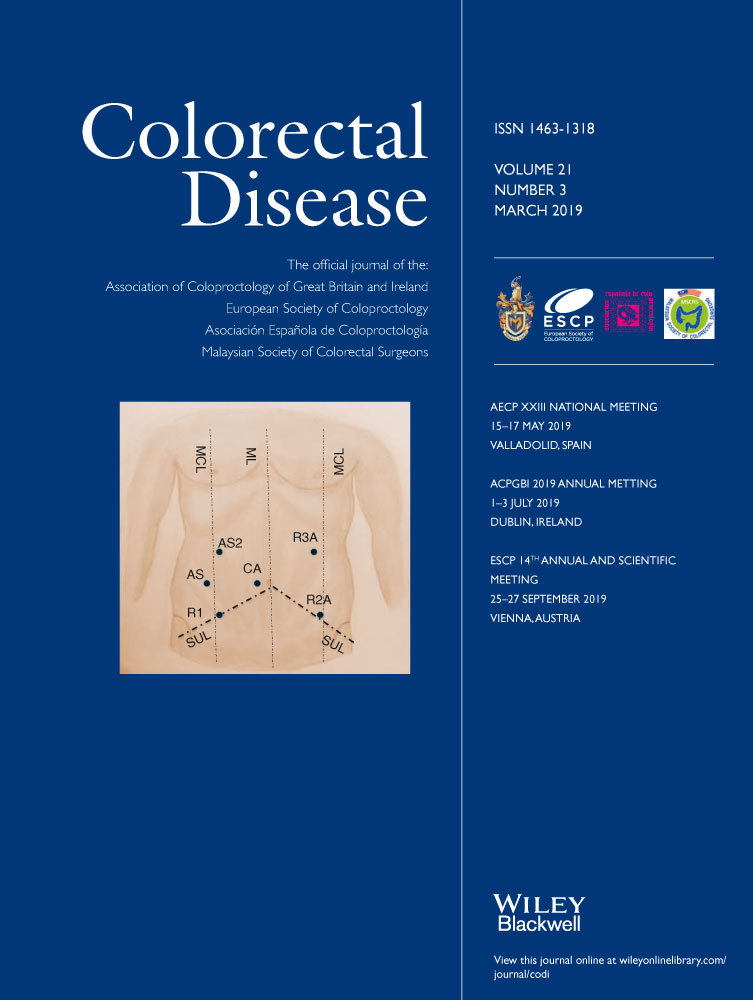Physiological changes after colorectal surgery suggest that anastomotic leakage is an early event: a retrospective cohort study
Abstract
Aim
Anastomotic leakage (AL) is often identified 7–10 days after colorectal surgery. However, in retrospect, abnormalities may be evident much earlier. This study aims to identify the clinical time point when AL occurs.
Method
This is a retrospective case-matched cohort comparison study, assessing patients undergoing left-sided colorectal resection between 2006 and 2015 at a specialist colorectal unit. Patients who developed AL (LEAK) were case-matched to two CONTROL patients by procedure, gender, laparoscopic modality and diverting stoma. Case note review allowed the collection of basic observation data and blood tests (leukocyte count, C-reactive protein, bilirubin, alanine transaminase, creatinine) up to postoperative day (POD) 4. The cohorts were compared, with the main outcome measure being changes in basic observation data.
Results
Of 554 patients, 49 developed AL. These were matched to 98 CONTROL patients. Notes were available for 105 patients (32 LEAK/73 CONTROL). Groups were similar in demographics, tumour or nodal status, preoperative radiotherapy, intra-operative air-leak integrity and drain usage. AL was detected clinically at a median of 7.5 days postoperatively. There was a significantly increased heart rate by the evening on POD 1 in LEAK patients (82.8 ± 14.2/min vs 75.1 ± 12.7/min, P = 0.0081) which persisted for the rest of the study. By POD 3, there was a significant increase in respiratory rate (18.0 ± 4.2/min vs 16.5 ± 1.3/min, P = 0.0069) and temperature (37.0 ± 0.4C vs 36.7 ± 0.3C, P = 0.0006) in LEAK patients. C-reactive protein was significantly higher in LEAK patients from POD 2 (165 ± 95 mg/l vs 121 ± 75 mg/l, P = 0.023).
Conclusions
Physiological and biochemical changes associated with AL happen very early postoperatively, suggesting that AL may occur within 36 h after surgery, despite much later clinical detection.




